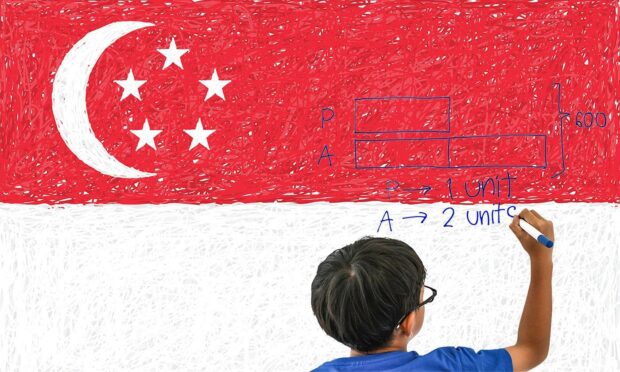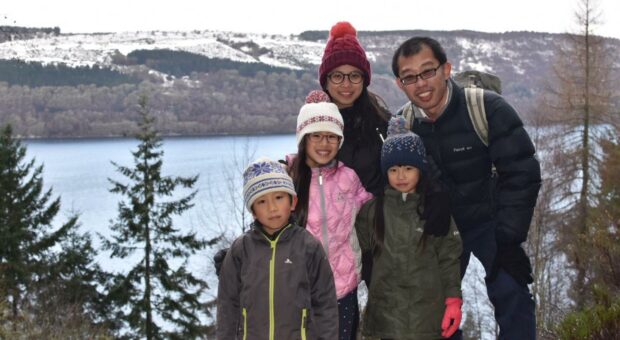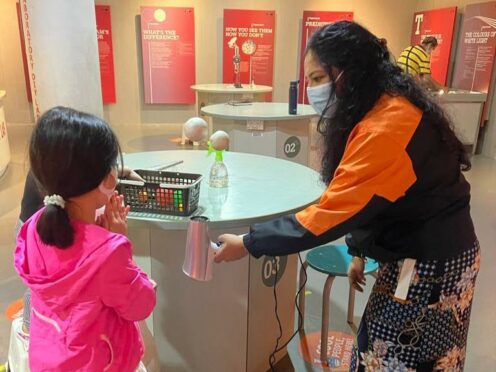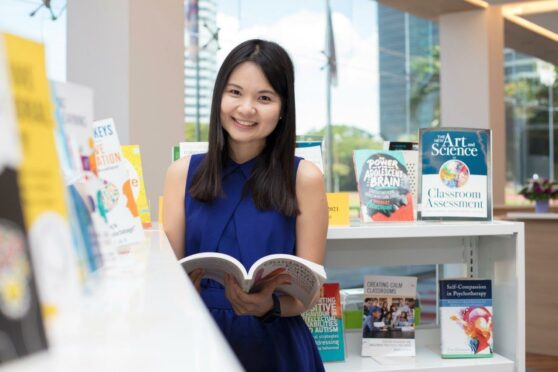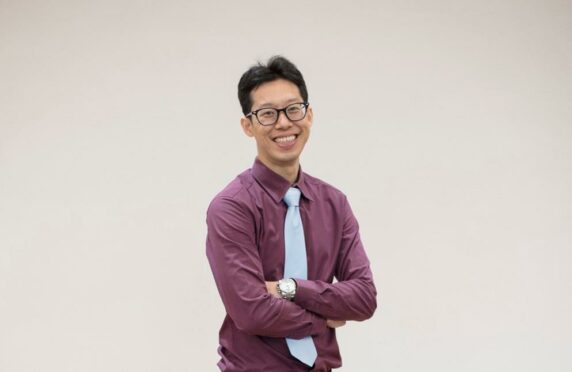Competitiveness, discipline, and rediscovering the joy of learning.
Is this why Singapore, with an almost identical population to Scotland, produces higher achieving school pupils?
The Pisa (Programme for International Student Assessment) tests judge education systems across the world. Results are released every three years.
Pisa measures 15-year-olds’ ability to use their reading, maths and science knowledge and skills to meet real-life challenges.
Pupils in 79 countries and regions worldwide take the tests.
Same population, but Scots kids far behind
Scotland recorded its worst-ever performance in maths and science in the most recent Pisa tests, ranked 25th and 24th among OECD nations.
Reading offered a rosier picture, with Scotland ranked above Wales and Northern Ireland, though slightly below England.
It achieved a mean score of 504 for reading (Singapore = 549); 489 for maths (Singapore = 569); and 490 for science (Singapore = 551).
Meanwhile, only China scored better than Singapore in reading, maths and science.
Singapore (population 5.7m to Scotland’s 5.5m) puts even the cream of European education – Estonia and Finland – in the shade.
Last year, Singaporean students accounted for half of the perfect scores in the International Baccalaureate (IB) examinations worldwide.
The Press and Journal spoke to Singaporean expat parents in Scotland, and teachers in Singapore, to find out more.
Singapore became an independent country in 1965. The education policies set in the 1970s and 1980s are largely those that apply today.
‘It’s about producing people who can contribute’
Feng-yi Soh, 39, lives in Inverness with wife Mei and children Victoria, 10, Joshua, eight, and Faith, seven.
“Education in Singapore is intimately linked with the initial, developmental years of the country,” he said.
“It’s about nation building. It’s about trying to quickly develop self-sufficiency of talent, and positioning the country in key industrial areas so that it can stand on its own two feet.
“So there is a lot of focus on science and engineering. One has to be extremely strong in maths and sciences, and also languages.
“Here in Scotland the system is more flexible, you can study arts and more liberal subjects.
“Education in Asia is still mainly focussed on producing people who can immediately contribute to the economy.”
Early start, early finish
Singaporean children start school at age seven.
At primary and secondary level, the school day generally starts at 7.30am and finishes at 1pm or 1.30pm.
A typical weekly schedule from the first grade includes 30-minute lessons in English, Chinese, maths, physical education, art, music, social studies, health education, socio-emotional guidance, and character and citizenship education (CCE).
Science is taught from the third grade to allow more focus on language and maths in the formative years of first and second grade.
Teaching is standardised so that all kids have a good grasp of these core subjects at an early stage, from eight to nine years old.
Discipline, patience, and retaining focus are key values instilled from the first day of school.
And much of the teaching revolves around problem-solving.
Feng-yi adds: “When you look at the maths syllabuses in Scotland and Singapore, they’re actually much the same.
“But it starts to deviate as you progress to nine, ten years old and beyond.
“At that stage in Singapore, they’re looking at how to get kids to apply the knowledge they’ve learned.
“They’ll be taught concepts such as heuristics, modelling, how do we solve problems.
“So kids no longer look at questions such as ‘what is the square of this number?’ They move on to application questions and problem solving.”
‘How do we excite kids?’
Singapore invests heavily in science education, pumping resources into school labs, something “sorely lacking” in most Scottish state schools, according to Feng-yi.
But more than money, the system actively tries to spark children’s interest in learning.
“A big topic is: how do we excite kids?” said Feng-yi.
“It’s like football. Most kids like football. What do we do with people who like football? We let them compete.
“That’s a healthy way of getting kids interested in a subject.
“Singapore has far more robust national competitions for schoolkids.
“It’s pretty routine in a state school to visit another state school to compete against, particularly in science.”
‘Children are naturally curious’
Setting out to make children love a subject is a sure-fire way of putting them off, according to Archana Chawla, senior educator at Science Centre Singapore.
Instead, kids should be engaged by tapping into their innate characteristics.
“Children are naturally curious, so trigger that curiosity and then wait and watch,” said Ms Chawla.
“Give them time to process things, for every child’s curiosity unfolds in its own time.
“Forcing the learning pace of the child can disrupt their flow of thought and impair their inspiration and understanding.
“For example, say you have set up an electrical circuit kit. You ask: ‘What is this?’ In your excitement you might blurt out, ‘It’s an electrical circuit!’
“This does not give kids the time to comprehend it for themselves.
“Instead, let kids take ownership of their learning.
“Give them time to take in the different parts of the circuit. Observe their reaction when the bulb lights up and engage them with expressions of curiosity about the causes.
“Work with their interests, and ask open-ended questions like ‘What do you think made the bulb light up?’
“Once you’ve got their attention, leave them with something to think about.
“Here’s another example. You could say, ‘You know when you are standing at a pedestrian crossing and a large vehicle rushes by, do you feel like something is pulling you in? Why do you think that happens?’
“The point is that science should not be communicated with an end in mind.
“It should have a continuation, ideally one that inspires kids to think about what they have learnt.”
Aspiring teachers sent abroad
An important building block in the Singaporean system was changing what it means to be a teacher.
Recognising the need to make teaching a highly-respected, sought-after profession, the government created a culture whereby the brightest students are attracted to teaching.
Aspiring teachers are sent abroad on scholarships to get their primary teaching degree.
They return to Singapore to complete their teacher training and then go straight into the system.
“In most countries, teaching is not seen as a very glamorous profession,” said Feng-yi.
“Young people don’t think of it as a top career. In Singapore we had to change that.
“If the teachers are not top notch, then the students are not going to be inspired.
“We thought ‘we have to make sure our brightest become teachers’. It was a bit like social engineering.”
Removing the fear of assessment
In common with other countries at the top end of the Pisa rankings, Singapore is keen to remove the fear of assessment.
Pupils are encouraged to see assessment as part of the learning process, rather than a hurdle to be cleared.
Instead of asking themselves ‘What mark did I get?’, students ask ‘Why did I answer in that way?’. The idea is to improve their understanding.
He Kangya is a teacher at Singapore Chinese Girls’ School.
Rather than a source of dread, Ms Kangya says assessment should be seen as a supportive tool for students to “learn how to learn”.
She said: “Removing the fear of assessment and helping students to focus on growth depend greatly on the environment and culture.
“Whenever I return examination papers, I get my students to go through them and write down their reflections both on subject and learning attitude.
“I then ask them to share their learning points with their parents at home and ask their parents to pen a response in return.
“Over time, my students started sharing how their parents encouraged them because they could see that they had already learnt from their mistakes.
“Now, after each task or quiz, students across all levels engage in a self-reflection and error-analysis.
“My students no longer look just at the score but the reason behind the score.
“They see how assessment helps them understand their progress.
“Their focus has shifted from their marks to concrete ways in which they can improve on their areas of weakness.
“That is the true intent of assessment.”
Excellence over mediocrity
Aiky Goh, 37, also lives in Inverness, with husband Kenny and children Elspeth, 6 and Grace, 2.
Elspeth is a pupil at Crown Primary School in the city.
She believes much of the discrepancy in attainment between Singaporean and Scottish pupils is down to culture.
“Being a small nation, with no natural resources other than its people, the importance of education was drilled into Singaporeans from independence,” said Aiky.
“The Singaporean education system celebrates excellence from the get go, rather than mediocrity.
“Good students are motivated to continue to excel and improve academically.
“That drive to excel from a young age impacts deeply on the rest of their lives.”
‘Life is a race’
She said Singaporeans develop an innate competitiveness and drive to succeed while still at school, which serves them well in later life.
“In Scotland, policies generally favour equality and fairness – everyone is taken care of by the state, as evidenced by our NHS, our social care and the benefits system.
“While this is admirable, I can’t help but feel it instils a sense of ‘entitlement’.
“In Singapore, such a sense of entitlement is less at play and people have to work hard for what they want.”
She added: “I don’t believe in not giving out medals during sports day for fear of offending the losers.
“Sadly, this is commonplace now in Scottish schools.
“Real life is a constant race. If kids are not taught that reality from a young age, how will they have the drive and motivation to work hard and succeed?”
Discipline not a dirty word
Finally, while ‘discipline’ is viewed as a dirty word from a bygone era by some educationalists in Scotland, in Singapore it forms a crucial part of the school experience.
Teacher Neo Wei Zong of Regent Secondary School said that discipline in the Singaporean sense is simply helping young people understand how rules benefit them and society.
“It is in the nature of teenagers to seek new experiences and test their limits,” said Mr Zong.
“They may feel rules are restricting and find those of us who enforce them to be antagonists in their lives.
“Therefore, one of the initiatives I introduced as part of my role in the Discipline Committee aimed to help students understand how rules, and by extension, the laws of a country, are meant not to restrict, but to make the community a better place for everyone.
“‘The Law and You’ is a series of talks I conduct during morning assembly every month.
“It teaches students about current affairs, Singapore’s legal code and its processes.
“I guide my students on how the law works, and describe the consequences for the perpetrators.
“By explaining about the harm that victims go through, and the problems that even petty crimes like littering and chewing gum have on the community, I help students to understand how the laws actually protect rather than restrict people.”
More from the Schools and Family team
Can Scottish schools catch up with Finland?
What lessons can Scottish schools take from Estonia?
Golf, football and…magic? What Andy and Jamie Murray might have been
